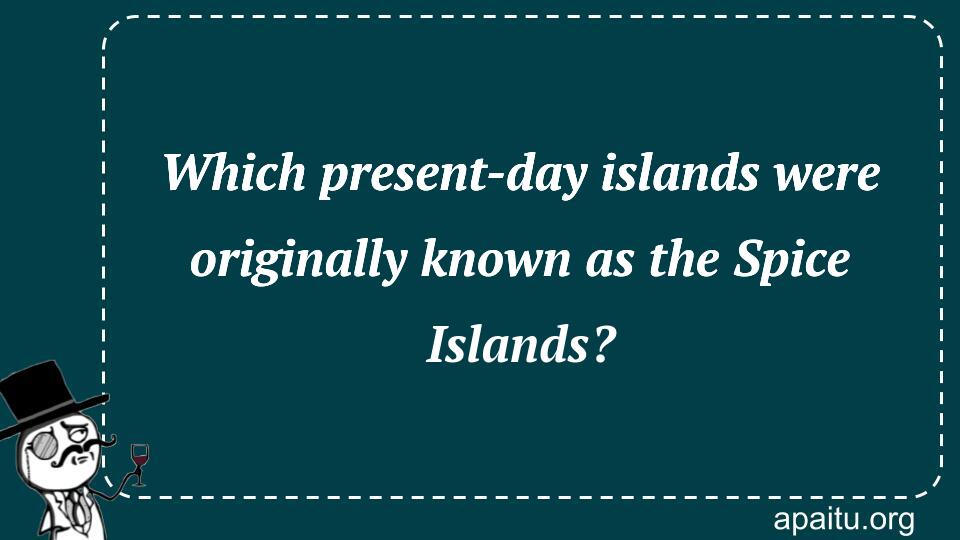Question
Here is the question : WHICH PRESENT-DAY ISLANDS WERE ORIGINALLY KNOWN AS THE SPICE ISLANDS?
Option
Here is the option for the question :
- Maluku Islands
- British Virgin Islands
- Bahamas
- Canary Islands
The Answer:
And, the answer for the the question is :
Explanation:
Volcanic in nature, the Maluku Islands can be found in Indonesia’s Malay Archipelago. The first Europeans to visit these islands, the Portuguese called them the “Spice Islands” because of the cloves and nutmeg they found there. Dutch East India Company colonial architecture still stands on some of the islands today.

The Spice Islands, also known as the Moluccas or Maluku Islands, are a group of islands located in Indonesia. These islands were once the center of the global spice trade, and their name is derived from the fact that they were the source of some of the world’s most valuable spices.
The Maluku Islands consist of more than 1,000 islands, with the largest being Halmahera, Seram, Buru, and Ambon. The islands are located in the eastern part of Indonesia, between Sulawesi and Papua. The Maluku Islands are situated in a region known as the “Ring of Fire,” which is an area of intense volcanic and seismic activity.
The Maluku Islands have a long history of spice trading dating back to the ancient times. The islands were originally inhabited by the indigenous people who traded spices with traders from China, India, and the Middle East. However, it was the arrival of the Europeans in the 16th century that transformed the spice trade and made the Maluku Islands one of the most important regions in the world.
The Portuguese were the first Europeans to arrive in the Maluku Islands in 1511. They quickly established a trading post on the island of Ternate and monopolized the trade in cloves, one of the most valuable spices in the world. However, the Dutch arrived in the early 17th century and took control of the spice trade from the Portuguese. They established a monopoly on the production and trade of nutmeg and mace, which are also grown in the Maluku Islands.
The Dutch used brutal methods to maintain their monopoly over the spice trade in the Maluku Islands. They destroyed the nutmeg trees on other islands and forced the locals to grow nutmeg only on certain islands, making it easier for them to control the trade. The Dutch also imposed high taxes on the spice trade, which led to widespread poverty and hardship for the locals.
the Maluku Islands remained the center of the global spice trade until the 19th century. However, the spice trade declined in the 20th century due to the emergence of synthetic substitutes and the opening up of new spice-growing regions in other parts of the world.
the Maluku Islands are still known for their spices, but they are also a popular tourist destination. The islands offer stunning natural beauty, with crystal clear waters, white sandy beaches, and lush rainforests. The Maluku Islands are also home to a rich cultural heritage, with a mix of indigenous, European, and Asian influences.
the Maluku Islands, also known as the Spice Islands, have a long and fascinating history. These islands were the center of the global spice trade for centuries and played an important role in shaping the world economy. Today, the Maluku Islands are still famous for their spices, but they are also a beautiful and culturally rich destination that attracts visitors from around the world.